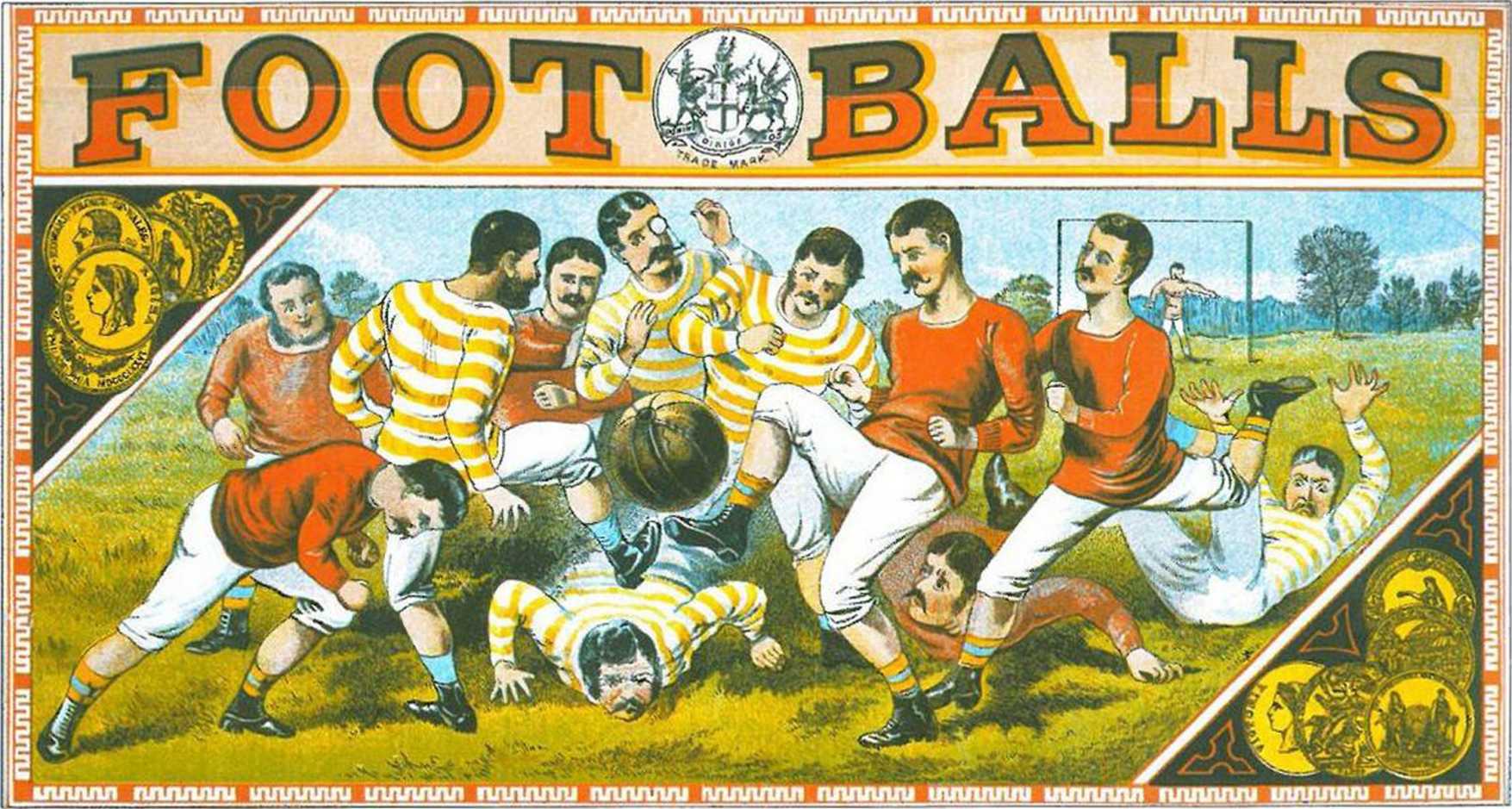There were many clubs who chose to follow Blackheath and stick witii the traditional handling game. But these were far outnumbered by tliose who subscribed to the “new” kicking and dribbling sport. And so, ironically, the traditional roughhouse working man’s game of rugby lost out in the popularity stakes to a perceived less manly code whose champions had been public schoolboys! Association football quickly established itself as the sport of the masses, while rugby became something of an elitist pursuit. In a remarkably short space of time, orthodoxy had been stood on its head.
Hybrid games still common
Football in 1863 still retained many of the elements of rugby. Hacking had gone, but handling the ball was still permissible, and a kick at goal could be won by touching down over the opposition’s goal-line. Nor did the formation of the FA have an immediate unifying effect on the game that was played up and down the country Many clubs played “soccer” - a word coined from Association football - others played rugby, while it was common to see games that were a hybrid of the two codes. When the FA was formed, Sheffield FC had already been in existence for at least five years. But this club had devised its own rules and when it sought FA membership, the Association did not even deign to reply. Notts County, established in 1862, thus became the oldest club among the founding members of the Football League. That was still a long way off, however. During the 1860s and 1870s the FA’s priorities were consolidation and standardisation, amending the laws and, in 1871, establishing a cup competition.
Rule changes
Rule changes that made die game far more recognisable as tlie one we know today included the introduction of goal kicks (1869) and corner kicks (1872). Offside was integrated into the laws, with three defenders required between die attacking player and the goal. In the mid-1860s tape was stretched between the posts at a height of 8 feet; a decade later it was replaced by a crossbar. In 1871 the term “goalkeeper” made its first appearance in the game’s legislative framework, and sealed the end of handling the ball for the outfield players. 11 - a-side games became the norm and the rules were enforced by an umpire. Thus, by the time the Rugby Football Union was formed in 1871, the two codes had diverged dramatically.
Not every match was played according to the regulations but the rules of the game gradually expanded from the 14 agreed upon by the FA in 1863. In 1865 the height of the tape which formed the crossbar of the goal was set at 8 feet although nets were not compulsory until 1891. Goalkeepers were first mentioned in the rules in 1871 and the penalty kick was introduced in 1891.





 World History
World History









